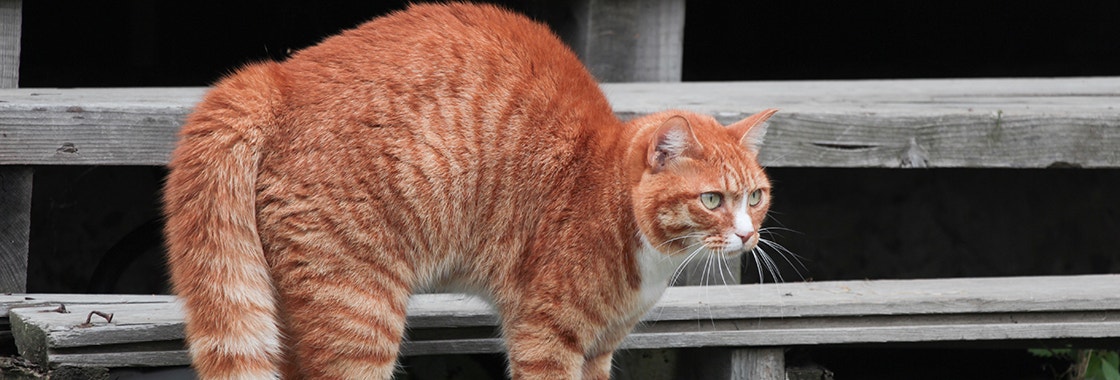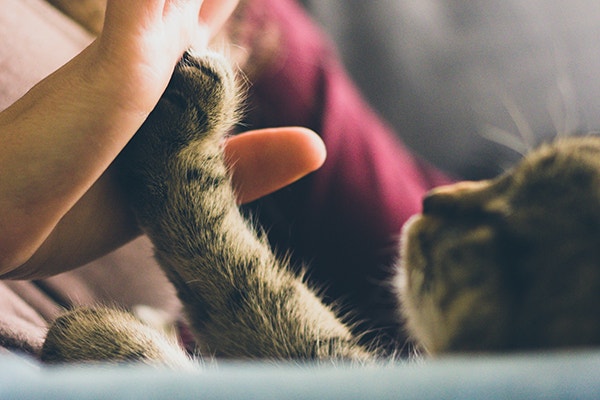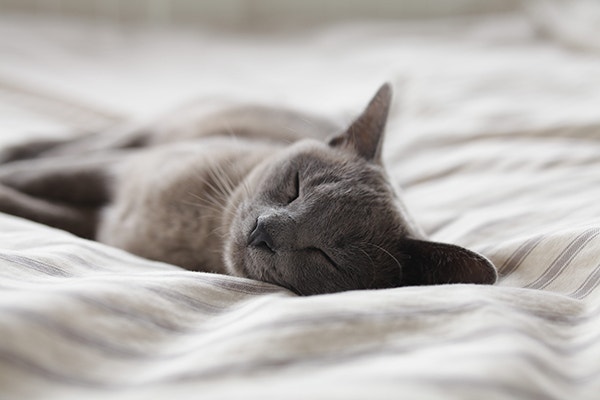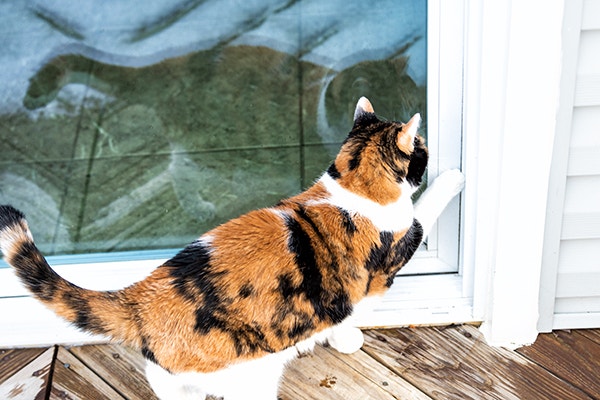- Homepage
- Blog
- Bonding & Care
- Cat Arching Back
Secrets of Cats Arching Backs Explained


Share
As a cat parent or enthusiast, you have probably seen the classic stance of an arched cat. Sometimes, cats arching their back is a sign of aggression, due to their instinctive nature to make themselves appear bigger in order to defend themselves and their territory against any potential threats. This behaviour is significant in cats as it can be a warning of further aggression if not dealt with properly. However, sometimes cats with arched backs may just be stretching, grooming, playing or enjoying being stroked.
It’s crucial for pet parents to learn about their cat’s body language in order to understand their mood and what they need from you. In this article, we discuss different reasons why cats arch their back, as well as how to interpret the body language of an arching cat and respond appropriately. This will help support your cat’s overall well-being and strengthen your bond through better communication.
Why do cats arch their backs?
Your cat is acting aggressive
The ultimate reason why cats arch their back is the same as why they engage in any type of body language: they are trying to communicate their emotional state to others. Whether your arched cat is feeling aggressive, stretching, grooming, playing or being petted, it’s important for cat parents to understand the context, body language and vocal cues of their cat in order to know how they are truly feeling. We explore some of the possible reasons behind cats arching their backs below.
Your cat is acting aggressive
Cats with arched backs are commonly thought to be showing aggression, either because of fear or territoriality. Cats have many natural instincts, and that includes defending themselves against perceived dangers. If your cat is arching their back, raising their fur (piloerection) and standing sideways, it’s usually an attempt to make themselves appear bigger and more intimidating to a potential threat. In this case, your cat’s arched back will also be accompanied by a bushy and swishing tail, flattened ears and large pupils with a fixated stare. You may also hear your cat hissing, spitting or growling.
Your cat is stretching
Cat enthusiasts will know that cats love to stretch, especially when they wake up from a nap, and with their extreme flexibility they can get themselves into all sorts of positions. One of the reasons why cats arch their back is to fully stretch the muscles along their spine, as well as improve their blood circulation to prepare for physical activities. You’ll know if this is the reason why your cat is arching if they have just woken up and are yawning as well.
Your cat is grooming
Besides stretching, cats also use their flexibility to groom hard-to-reach areas. An arched cat can access more areas of their body, such as around their stomach or the base of their tail. If your cat has an arched back while licking their fur, the behaviour may just be to support their grooming needs.
Your cat is being stroked
Some cats enjoy being stroked on their back, so if your cat arches their back when you pet them, they may be encouraging the interaction. By arching their backs, cats can push their bodies against your hand to create more pressure for the petting. If your cat is purring at the same time, this is a positive sign that your cat is enjoying the attention.
Your cat is feeling playful
Kittens often arch their back in a playful manner when playing with a toy, and you may even notice them jumping sideways before pouncing onto it. This behaviour can continue in playful adult cats, and you’ll know it’s not a sign of aggression as their fur will not be raised and they may jump towards you instead of away. Cats show love and affection in many ways, and this could be one of their ways to seek interaction.
How can I interpret a cat's body language when it arches its back?
Learning more about your cat’s body language can help you to better understand their intentions, emotions and needs. An arched cat who is feeling aggressive may have raised fur, a bushy tail, flattened ears, pulled-back whiskers, and dilated pupils. Also, while cats wag their tails for a range of moods, a swishing tail usually indicates an unhappy cat.
On the other hand, if your cat is feeling content, their fur won’t be raised, their tail and ears will be relaxed, whiskers pointed forward, and pupils narrowed. You can also observe an arching cat’s vocal cues, as hissing or growling indicates aggression while purring and meowing generally indicate contentment. Cat parents can observe the context of their cat arching their back to understand if they feel afraid, defensive or aggressive about the situation. If not, your cat may just be grooming, stretching or playing.
What should I do if my cat arches its back?
It’s important that cat parents know how to respond to an arching cat. If your cat is arching their back while showing other signs of aggression, such as raised fur, standing sideways and growling, you should give your cat some space. Never try to approach or pick up a cat with an arched back, as this may be misconstrued as an attack - instead, you should slowly move away. When you’re at a safe distance, you can try talking to your cat in a calm voice. You can also try slowly blinking at your cat, a behaviour that shows trust among cats, to let them know you’re not a threat. Consider whether the situation your cat is in is causing them to feel frightened or threatened, and try to remove your cat’s trigger if possible.
If your cat arches their back when you pet them, and their body language is relaxed, this is a positive sign that they’re enjoying the interaction. However, some cats are more sensitive along their spine and may not want you to stroke them there. Also, cats can quickly become overwhelmed when being petted, so we advise to pause regularly to make sure your cat is comfortable. If they’re not, you may notice that their tail begins swishing or their body becomes tense, in which case you should stop.
Caring for a cat includes understanding their body language so you can communicate with them better and build a positive relationship together.
Cats display different types of body language depending on their mood about the situation. In order to keep your cat happy and deepen your bond, it’s important for cat parents to learn what they are trying to communicate. You can also support your bond by serving high-quality food to your cat, such as Sheba® Wet Cat Food. With specially-formulated recipes designed to provide a complete and balanced diet for your cat, you can be rest assured that your cat is receiving all of the delicious nutrients they need with Sheba® Wet Cat Food - and they will love you for it!
Cats Arching Backs: FAQ
Why does my cat's back ripple?
The reason why your cat’s back ripples is due to a physiological response whereby your cat’s fur raises to stand on end - also known as piloerection - creating a ripple-like appearance. Cats arch their back and raise their fur when they are feeling threatened, to appear bigger and more intimidating.
Why is my cat purring and arching back?
If your cat is purring and arching their back, it’s unlikely that your cat is feeling or showing aggression as purring usually indicates contentment. In this case, your cat may be arching their back because they’re stretching or grooming, or because they want you to pet or play with them.
Why do cats arch their back and rub against you?
Cats may arch their back and rub against you if you’re stroking them along their spine and they want to create more pressure between their back and your hand. If your cat arches their back when you pet them, it’s a positive sign that they are enjoying the sensation.



